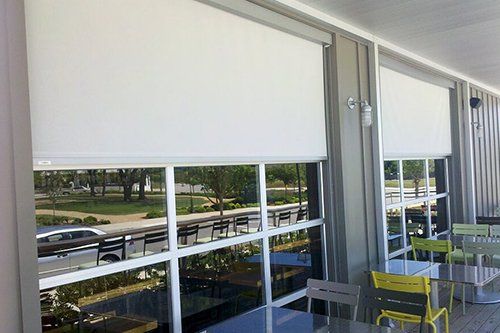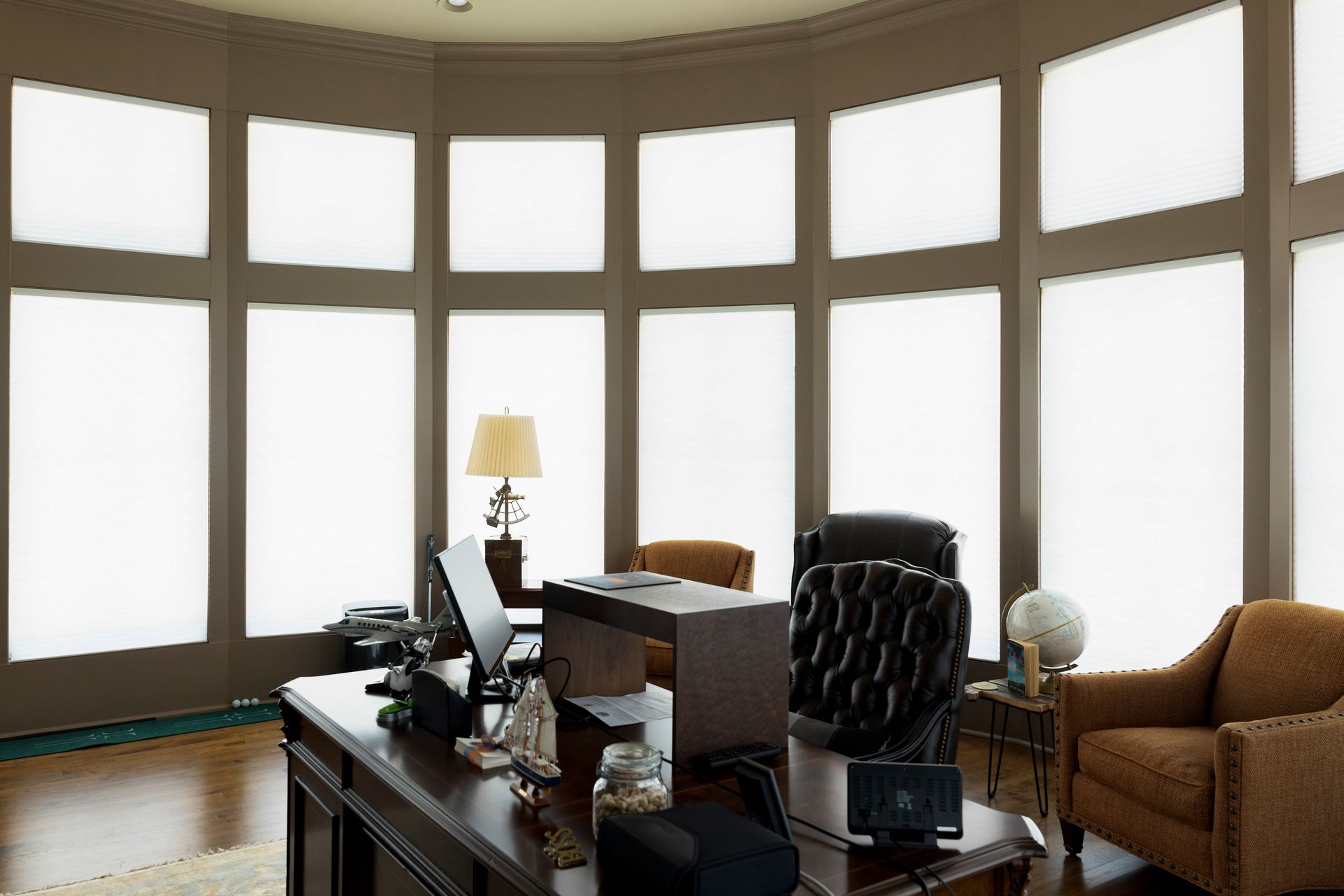When it comes to finding the perfect window treatments to complement your home, there are countless options of blinds available on the market to meet your space’s style and functionality needs. Before you start comparing colors, patterns, and materials, however, it’s important to consider whether the windows you are designing would benefit most from vertical or horizontal blinds. While they share many similarities, becoming familiar with the differences between the two can make all the difference in getting the most out of your window coverings. Here are some critical factors of each style to keep in mind when shopping for blinds.
Vertical Blinds
- Window Size: Ideal for sliding glass, patio, or particularly large doors and windows, vertical blinds work well in filling out wide spaces nicely.
- Maintenance: Vertical blinds should be cleaned regularly and are slightly easier to maintain than horizontal if done consistently. Because they move on a single track, they may need to be replaced more frequently than horizontal blinds.
- Privacy: While vertical blinds are more effective at blocking sunlight than their horizontal counterparts thanks to their large slats, they still tend to let in some amount of sunlight. For this reason, they may not be the best option for a room that requires total privacy, such as a bathroom or bedroom.
- Positioning: Windows that face east and west are most suitable for vertical blinds.
- Size of Slats: Vertical blinds tend to have larger slats that hang from a head rail at the top of the door or window. They can be easily closed using a wand or chain pulley system.
Horizontal Blinds
- Window Size: Perfect for small, narrow, or unusually tall spaces, horizontal blinds work well in small or medium sized windows.
- Maintenance: Like vertical blinds, horizontal blinds are easier to clean if done frequently, rather than trying to deep clean them when they are quite dirty. While they tend to last longer than vertical ones, horizontal blinds can be hard to reach and have additional strings that make cleaning more challenging.
- Privacy: When privacy is a top priority for your room, horizontal blinds can’t be beat. They are very effective at blocking out sunlight when closed, and don’t pose a risk of being accidentally pushed open like vertical ones.
- Positioning: Windows that face north and south are most suitable for horizontal blinds.
- Size of Slats: Horizontal blinds tend to have smaller slats that do not touch the floor, while vertical ones do. They are also less noisy, especially if they will hang in windows that will be left open on windy days.
Similarities
Now that you are familiar with the strengths and differences of vertical and horizontal blinds, you can focus on how you want your window treatments to look in the room you are designing. The good news is that no matter which style you choose, both options are great at blocking out harmful UV rays from the sun, can help keep your home cooler, and can be made from numerous materials, such as aluminum, wood, vinyl, and more, to meet your unique needs.
While many retail stores offer a decent selection of blinds for doors and windows, not all blinds are made equally. Inexpensive blinds may save you a few bucks upfront, but what they save in cost they will lack in durability and attractiveness. To get the most out of your window treatments, it’s best to invest in blinds that will serve you well for years to come. Just Blinds, Inc. are experts at providing custom window coverings to make even the most challenging of spaces inviting and functional. Serving the River Region and Birmingham areas for over 30 years, Just Blinds, Inc. takes pride in offering homeowners and contractors quality products and superior service. Our large selection of custom blinds, free in-home consultations, and knowledgeable design experts will make the process of selecting the perfect window coverings to complement your space a pleasure.
Expert Advice by Just Blinds


